Your cart is currently empty!
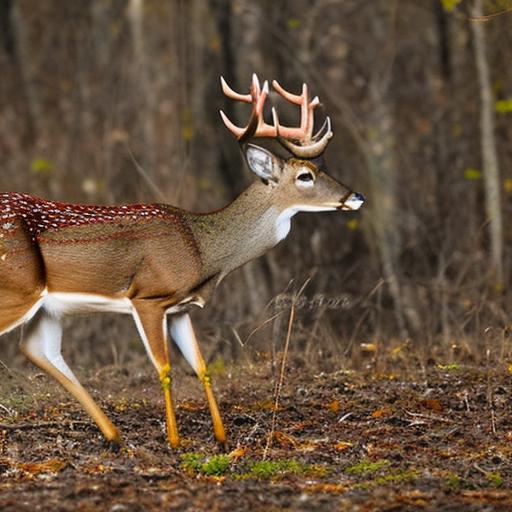
13 phases of deer hunting

Deer hunting season is a highly anticipated time of year for many outdoor enthusiasts. It brings with it a sense of excitement and adventure as hunters prepare to embark on their quest for the elusive whitetail deer. Whether you are a seasoned hunter or a beginner, the thrill of the hunt is something that cannot be replicated. In this article, we will explore the various aspects of deer hunting season, from pre-season preparation to hunting tactics and techniques, to ensure that you have a successful and enjoyable experience.
Key Takeaways
- Pre-season preparation is key to a successful deer hunting season
- Early season hunting requires patience and attention to detail
- Mid-season deer hunting requires strategic scouting and tracking
- Understanding deer behavior during the rut is crucial for successful hunting
- Late season hunting requires proper gear and staying warm in the field
- Archery hunting requires specialized techniques and equipment
- Rifle hunting requires accuracy and safety precautions
- Muzzleloader hunting requires careful equipment selection and technique
- Tracking and scouting are essential for finding deer patterns
- Hunting ethics involve respecting wildlife and the environment.
The Pre-Season Preparation: Getting Ready for Deer Hunting Season
Preparation is key when it comes to deer hunting season. Before heading out into the field, it is important to spend time scouting the area where you plan to hunt. This involves familiarizing yourself with the terrain, identifying potential food sources and water sources, and locating bedding areas. By doing so, you will have a better understanding of where the deer are likely to be during hunting season.
In addition to scouting, practicing your shooting skills is crucial. Set up targets at various distances and practice shooting from different positions, such as standing, kneeling, and sitting. This will help improve your accuracy and confidence when it comes time to take a shot at a deer.
Physical and mental preparation are also important aspects of pre-season preparation. Engaging in regular exercise to improve your stamina and endurance will help you navigate through rugged terrain and carry heavy gear. Mental preparation involves visualizing successful hunts and mentally rehearsing different scenarios that may arise during the hunt. This will help you stay focused and make quick decisions in the field.
Early Season Hunting: Tips and Tactics for Success
Early season hunting can present its own set of challenges. Warm weather can limit deer movement during daylight hours, making it more difficult to spot them. However, there are strategies that can increase your chances of success during this time.
One tactic is to hunt near food sources. Deer will often feed heavily during the early season to build up their fat reserves for the upcoming winter. By setting up near food plots, agricultural fields, or mast-producing trees, you increase your chances of encountering deer.
Another strategy is to hunt near water sources. In warm weather, deer will seek out water to stay hydrated. Setting up near a creek, pond, or watering hole can increase your chances of seeing deer.
It is also important to pay attention to wind direction and thermals during early season hunting. Deer have a keen sense of smell and can easily detect human scent. Setting up downwind of where you expect deer to be can help mask your scent and increase your chances of a successful hunt.
Mid-Season Deer Hunting: Strategies for Finding Bucks
As the season progresses into mid-season, deer behavior begins to change. The rut, or mating season, starts to kick in, and bucks become more active in their search for does. This presents a great opportunity for hunters to target mature bucks.
One strategy for finding bucks during mid-season is to hunt near scrapes and rubs. Bucks will create scrapes by pawing the ground and urinating on it to mark their territory and attract does. Setting up near these scrapes can increase your chances of encountering a buck.
Another tactic is to use calling techniques. Bucks will respond to grunt calls and rattling antlers during the rut. By mimicking the sounds of a buck, you can attract them to your location.
It is important to note that during the rut, bucks may be more focused on finding does than on food sources. Therefore, hunting near bedding areas or travel corridors between bedding areas and food sources can be effective during this time.
The Rut: Understanding Deer Behavior and Tactics for Hunting
The rut is an exciting time for deer hunters as it brings with it increased deer activity and the potential for encounters with mature bucks. Understanding deer behavior during the rut is crucial for a successful hunt.
During the rut, bucks are primarily focused on finding does to mate with. They will be more active during daylight hours and may be more willing to respond to calls and decoys. Using a doe decoy can attract bucks to your location, as they will be looking for potential mates.
Calling techniques can also be effective during the rut. Bucks will respond to grunt calls and rattling antlers, as they are trying to establish dominance and attract does. By using these calls strategically, you can lure bucks within shooting range.
It is important to note that during the rut, deer movement patterns can be unpredictable. Bucks may be chasing does throughout the day, so it is important to be patient and stay in the field for extended periods of time. This increases your chances of encountering a buck during this exciting time of year.
Late Season Hunting: How to Stay Warm and Find Deer
Late season hunting presents its own set of challenges, including cold weather and decreased deer movement. However, with the right strategies, you can still have a successful hunt during this time.
Staying warm is crucial during late season hunting. Dressing in layers and using insulated clothing will help trap body heat and keep you comfortable in cold temperatures. It is also important to wear proper footwear and gloves to prevent frostbite.
Finding deer during late season hunting can be challenging as their movement patterns change. Deer will often seek out thick bedding areas for warmth and security. Hunting near these bedding areas can increase your chances of encountering deer.
Food sources become even more important during late season hunting as deer try to replenish their fat reserves before winter sets in. Setting up near food plots or agricultural fields can increase your chances of seeing deer.
It is also important to pay attention to wind direction during late season hunting. Deer will rely heavily on their sense of smell during this time, so setting up downwind of where you expect deer to be can help mask your scent and increase your chances of success.
Archery Hunting: Techniques and Equipment for a Successful Hunt
Archery hunting offers a unique and challenging experience for hunters. It requires a high level of skill and precision to make an accurate shot with a bow and arrow. However, with the right techniques and equipment, you can have a successful hunt.
Choosing the right equipment is crucial for archery hunting. Selecting a bow that is the right draw weight and length for your body type and shooting style is important for accuracy and comfort. It is also important to choose arrows that are the correct spine and weight for your setup.
Practicing your shooting skills is crucial for archery hunting. Regularly shooting your bow at various distances and from different positions will help improve your accuracy and confidence in the field. It is also important to practice shooting from elevated positions, as many archery hunts involve hunting from tree stands.
When it comes to shot placement, it is important to aim for the vitals of the deer. This includes the heart and lungs. Taking ethical shots that ensure a quick and humane kill is important for responsible hunting.
Rifle Hunting: Tips for Accurate Shots and Safe Hunting
Rifle hunting is a popular method of deer hunting due to its accuracy and range. However, it requires proper technique and safety precautions to ensure a successful hunt.
Choosing the right rifle and caliber for deer hunting is important. Selecting a rifle that is comfortable to shoot and has enough power to ethically take down a deer is crucial. It is also important to choose the right ammunition that is appropriate for the game you are hunting.
Practicing your shooting skills with your rifle is crucial for accuracy. Regularly shooting at targets at various distances will help you become familiar with your rifle’s trajectory and improve your marksmanship. It is also important to practice shooting from different positions, such as standing, kneeling, and sitting, as you may encounter different shooting scenarios in the field.
When it comes to shot placement, it is important to aim for the vitals of the deer. This includes the heart and lungs. Taking ethical shots that ensure a quick and humane kill is important for responsible hunting.
Safety is also a top priority when rifle hunting. Always be aware of your surroundings and know what is beyond your target before taking a shot. It is also important to wear blaze orange clothing to make yourself visible to other hunters in the area.
Muzzleloader Hunting: Choosing the Right Equipment and Techniques
Muzzleloader hunting offers a unique and challenging experience for hunters. It requires a high level of skill and precision to make an accurate shot with a muzzleloading firearm. However, with the right equipment and techniques, you can have a successful hunt.
Choosing the right muzzleloader is crucial for muzzleloader hunting. There are various types of muzzleloaders available, including flintlock, percussion cap, and inline models. Each has its own advantages and disadvantages, so it is important to choose one that suits your preferences and shooting style.
Selecting the right powder and projectile for your muzzleloader is also important. Black powder or black powder substitutes are commonly used as propellants in muzzleloaders. It is important to follow the manufacturer’s recommendations for powder charges to ensure safe and accurate shooting. When it comes to projectiles, there are various options available, including round balls, conical bullets, and saboted bullets. It is important to choose one that is appropriate for your muzzleloader and intended game.
Practicing your shooting skills with your muzzleloader is crucial for accuracy. Regularly shooting at targets at various distances will help you become familiar with your firearm’s trajectory and improve your marksmanship. It is also important to practice loading and cleaning your muzzleloader, as these tasks can be time-consuming in the field.
When it comes to shot placement, it is important to aim for the vitals of the deer. This includes the heart and lungs. Taking ethical shots that ensure a quick and humane kill is important for responsible hunting.
Tracking and Scouting: Finding Deer Sign and Patterns
Tracking and scouting are essential skills for finding deer during hunting season. By understanding deer sign and patterns, you can increase your chances of encountering deer in the field.
One of the most common signs of deer presence is tracks. Deer tracks can provide valuable information about the size and direction of travel of the deer. By studying tracks, you can determine where deer are entering and exiting an area, as well as their preferred travel routes.
Another sign to look for is droppings. Deer droppings can provide information about the diet of the deer and their activity level in a particular area. Fresh droppings indicate recent deer activity, while older droppings indicate that deer have been in the area for some time.
Rubbing trees and scrapes are also signs of deer presence. Bucks will rub their antlers on trees to mark their territory and remove velvet from their antlers. Scrapes are areas where bucks paw at the ground and urinate to mark their territory and attract does. By locating rubbing trees and scrapes, you can determine where bucks are likely to be during hunting season.
Scouting involves spending time in the field observing deer behavior and patterns. This can be done through glassing from a distance or by setting up trail cameras to monitor deer activity. By understanding where deer are feeding, bedding, and traveling, you can strategically plan your hunts and increase your chances of success.
Hunting Ethics: Respecting Wildlife and the Environment During Deer Hunting
Hunting ethics are an important aspect of responsible hunting. It is crucial to respect wildlife and the environment while participating in deer hunting.
One of the key principles of hunting ethics is fair chase. Fair chase involves giving the animal a reasonable chance to escape and using ethical hunting practices to ensure a quick and humane kill. This includes taking shots within your effective range, aiming for the vitals of the deer, and using appropriate equipment and ammunition.
Respecting wildlife means not only harvesting animals legally and ethically but also appreciating their beauty and role in the ecosystem. It is important to observe and learn about the behavior and habits of deer and other wildlife species. This can enhance your hunting experience and deepen your connection with nature.
Respecting the environment involves leaving no trace while hunting. This means packing out all trash, minimizing disturbance to the natural habitat, and following all regulations and guidelines set forth by wildlife management agencies. It is important to be a responsible steward of the land and leave it in better condition than you found it.
Deer hunting season is an exciting time for outdoor enthusiasts. By engaging in pre-season preparation, understanding deer behavior, and using effective hunting tactics and techniques, you can increase your chances of having a successful and enjoyable hunt. It is important to always hunt responsibly, respecting wildlife and the environment, to ensure that future generations can continue to enjoy this cherished tradition. So gear up, get out there, and enjoy the upcoming deer hunting season responsibly!
If you’re interested in the different phases of deer hunting, you might also enjoy reading about chukar bird hunting. Chukar birds are known for their challenging nature and require similar skills and strategies as deer hunting. This article from Old Oak Syndicate provides valuable insights into the techniques and tactics used in chukar bird hunting, making it a great companion piece to understanding the 13 phases of deer hunting. Check it out here: Chukar Bird Hunting.
FAQs
What are the 13 phases of deer hunting?
The 13 phases of deer hunting are scouting, pre-season preparation, opening day, early season, pre-rut, rut, post-rut, late season, tracking, still-hunting, stand hunting, stalking, and recovery.
What is scouting in deer hunting?
Scouting is the process of locating deer and their habitats before the hunting season begins. It involves exploring the hunting area, looking for signs of deer activity, and identifying potential hunting spots.
What is pre-season preparation in deer hunting?
Pre-season preparation involves getting all the necessary gear and equipment ready for the hunting season. It also includes practicing shooting skills and physical fitness to ensure readiness for the hunt.
What is opening day in deer hunting?
Opening day is the first day of the hunting season when hunters are allowed to legally hunt deer. It is usually a highly anticipated event for hunters.
What is early season in deer hunting?
Early season is the period of the hunting season when deer are still in their summer patterns and are more active during the day. It is usually the best time to hunt with a bow.
What is pre-rut in deer hunting?
Pre-rut is the period of the hunting season when deer are starting to become more active and are beginning to establish their territories. It is usually a good time to hunt with a rifle.
What is rut in deer hunting?
Rut is the breeding season for deer when bucks are actively seeking out does. It is usually the most exciting time of the hunting season for hunters.
What is post-rut in deer hunting?
Post-rut is the period of the hunting season when deer are recovering from the breeding season and are starting to establish their winter patterns. It is usually a good time to hunt with a rifle.
What is late season in deer hunting?
Late season is the period of the hunting season when deer are in their winter patterns and are more focused on finding food and shelter. It is usually a good time to hunt with a rifle.
What is tracking in deer hunting?
Tracking is the process of following deer tracks and signs to locate a deer. It is usually done on foot and requires a lot of patience and skill.
What is still-hunting in deer hunting?
Still-hunting is the process of slowly and quietly moving through the woods to locate a deer. It is usually done on foot and requires a lot of patience and skill.
What is stand hunting in deer hunting?
Stand hunting is the process of sitting in a stationary position, usually in a tree stand or ground blind, and waiting for a deer to come within range. It is usually done with a rifle.
What is stalking in deer hunting?
Stalking is the process of slowly and quietly moving through the woods to get within range of a deer. It is usually done on foot and requires a lot of patience and skill.
What is recovery in deer hunting?
Recovery is the process of finding and retrieving a deer that has been shot and killed. It is usually done with the help of a hunting dog and requires a lot of skill and patience.

Herb has been a longtime lover of the outdoors. Whether it be hunting, camping, fishing or just getting outside to reset. Proud father and animal lover. Bourbon anyone?

by
Tags:
Comments

Categories
- Big Game Hunting (301)
- Deer (202)
- Reviews (3)
- Shooting (16)
- Slingshot (1)
- Small Game Hunting (42)
- Upland Hunting (126)
- Waterfowl Hunting (3)

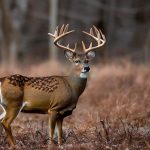
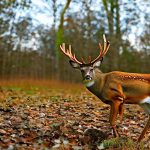
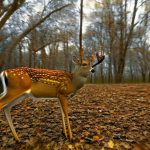
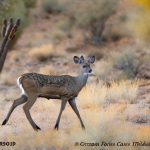
Leave a Reply